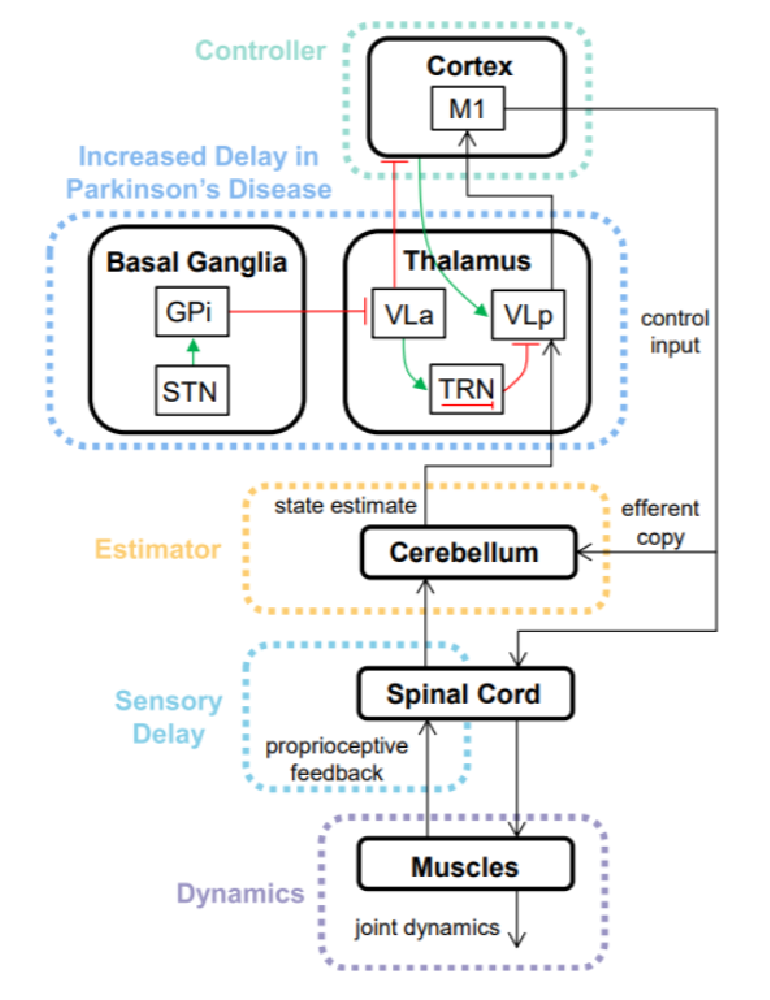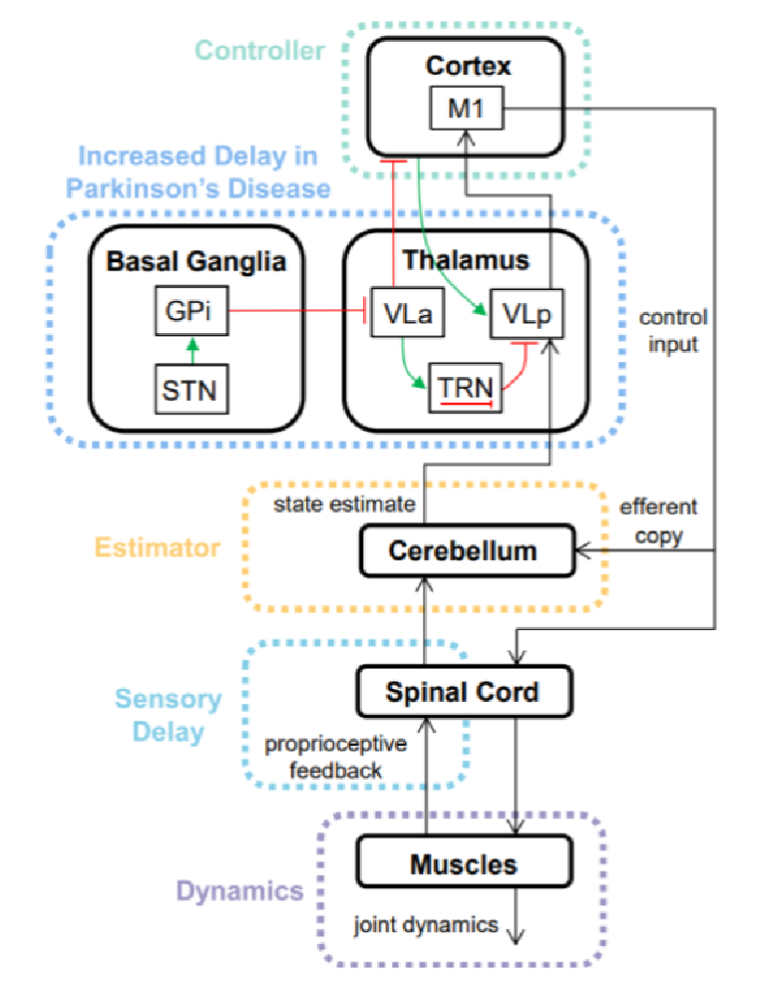
Parkinson’s disease produces tremor in a large subset of patients despite generally inhibiting movement. The pathophysiology of parkinsonian tremor is unclear, leading to uncertainty in how and why treatments reduce tremor with varying effectiveness. Models for parkinsonian tremor attempt to explain the underlying principles of tremor generation in the central nervous system, often focusing on neural activity of specific substructures. In contrast, control system approaches to modeling the human motor system provide qualitative results that help inform conclusions from clinical studies. This paper uses an optimal control approach to investigate the hypothesis that an increased delay in the central nervous system—unaccounted by delay compensation mechanisms—produces parkinsonian tremor. This hypothesis is motivated by the excessive inhibition projected from the basal ganglia to the thalamus in Parkinson’s disease. The thalamus relays signals from the cerebellum to the primary motor cortex: previous mapping of optimal control components indicates this prospective delay exists between the estimator (cerebellum) and controller (primary motor cortex). Simulations demonstrate realistic tremor in a neuromuscular model of the wrist. In addition, changes to effort sensitivity in the optimal controller may account for some clinical features of parkinsonian tremor, including the characteristics of re-emergent tremor and the time-varying amplitude and frequency of tremor. Contextualization of the optimal control model with physiological models and clinical observations provides insight into the potential role of the basal ganglia and cerebello-thalamo-cortical circuit and how treatments like dopaminergic medications and deep brain stimulation reduce tremor.

